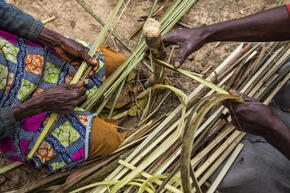Learn more about our impact
Learn more about our impact
- What we care about
- People
- Places
- Species
- Climate crisis
- Sustainability
- How we work
- Public policy
- Science
- Business
- Wildlife conservation
About WWF
WWF works to sustain the natural world for the benefit of people and wildlife, collaborating with partners from local to global levels in nearly 100 countries.
 Community Development and Indigenous Rights
Community Development and Indigenous Rights
 Women and Girls
Women and Girls

 Sustainability Works
2023 Farm Bill: An Opportunity for Food and Farm Security
Sustainability Works
2023 Farm Bill: An Opportunity for Food and Farm Security








 Robin Naidoo
Senior Conservation Scientist and Lead Wildlife Scientist
Robin Naidoo
Senior Conservation Scientist and Lead Wildlife Scientist
 Elisabeth Kruger
Manager, Arctic Wildlife
Elisabeth Kruger
Manager, Arctic Wildlife
 Christopher Holtz
Vice President, Earth for Life
Christopher Holtz
Vice President, Earth for Life
 Althea Skinner
Director, Inclusive Conservation - Impact, Learning, and Partnerships
Althea Skinner
Director, Inclusive Conservation - Impact, Learning, and Partnerships
 Alison Cross
Director, Fishery Sustainability
Alison Cross
Director, Fishery Sustainability
 Shauna Mahajan
Lead Social Scientist, Global Science
Shauna Mahajan
Lead Social Scientist, Global Science
 Brent Nordstrom
Vice President, Conservation Program Management
Brent Nordstrom
Vice President, Conservation Program Management
 Gina Barbieri
Ombudsperson, WWF Global Conservation Network
Gina Barbieri
Ombudsperson, WWF Global Conservation Network
 Nathalie Simoneau
Director, Gender and Social Inclusion
Nathalie Simoneau
Director, Gender and Social Inclusion
 Cheryl Margoluis
Executive Director, CARE-WWF Alliance
Cheryl Margoluis
Executive Director, CARE-WWF Alliance
 Nathan Bennett
Global Oceans Lead Scientist, Global Science
Nathan Bennett
Global Oceans Lead Scientist, Global Science
 Johana Deza
Senior Program Officer, Conservation Areas
Johana Deza
Senior Program Officer, Conservation Areas

